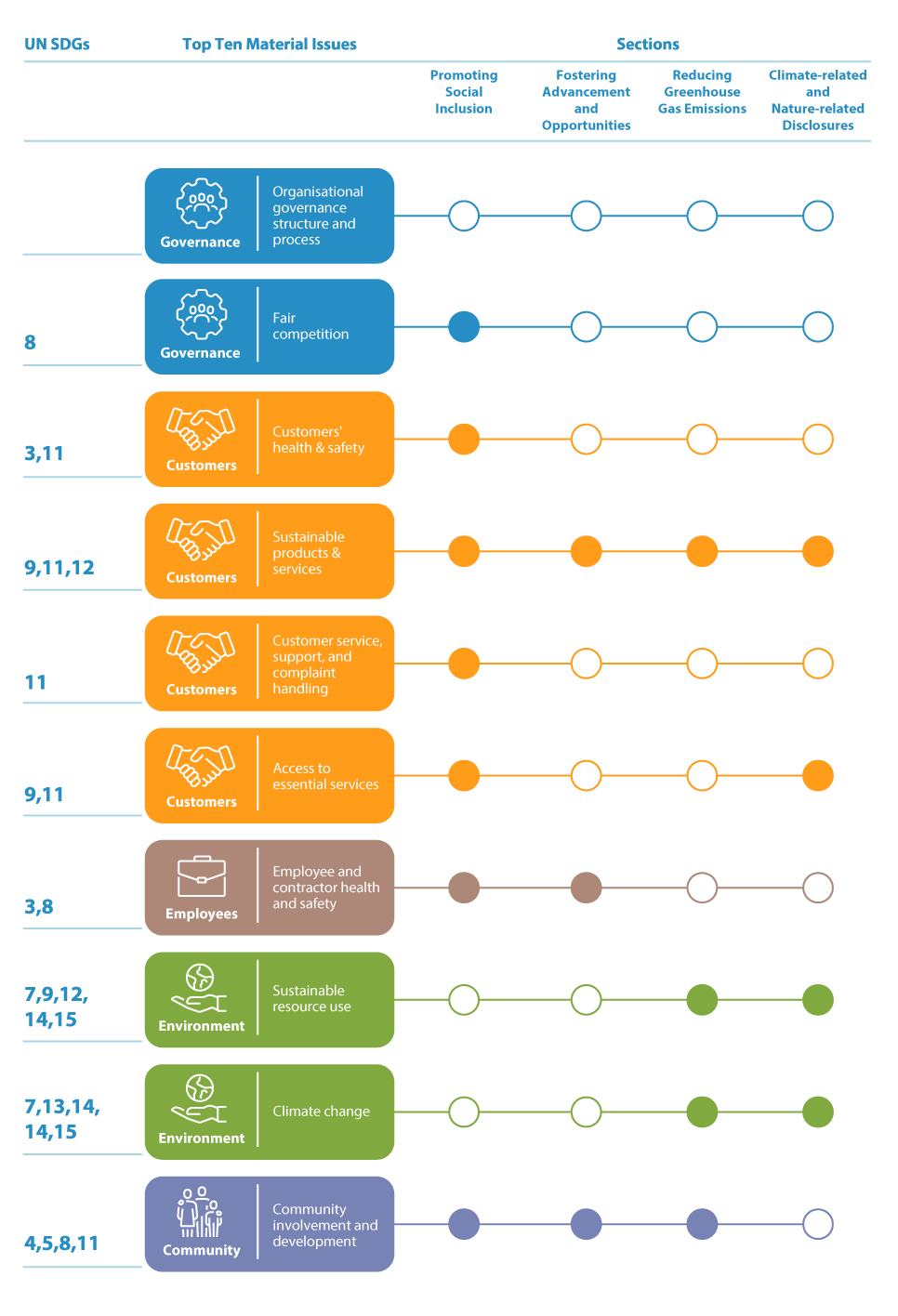Assessment Approach
Following the principle of materiality, we conduct a stakeholder-driven materiality assessment every year to identify material issues which reflect the Corporation's significant economic, environmental and social impacts, as well as those that influence stakeholder decisions. The materiality assessment consists of four steps and enables us to identify and prioritise sustainability issues relevant to both the Corporation and our key stakeholders.
-
Step 1: Identification of Sustainability Reporting Issues
We refer to the ISO 26000 Guidance on Social Responsibility to identify all possible sustainability issues which may be relevant to the Corporation and organise them into six main themes:
- Governance
- Customers
- Employees
- Environment
- Supply Chain
- Community
-
Step 2: Importance to Stakeholders Based on Stakeholder Engagement
Feedback from the regular stakeholder engagement during the reporting year is integrated into the process to determine the relative importance of each identified issue.
-
Step 3: Importance to the Corporation Based on the Enterprise Risk Management System
We evaluate the links between the identified sustainability issues and levels of enterprise risks in our Enterprise Risk Register to systematically determine the relative importance of each identified issue to the Corporation.
-
Step 4: Endorsement by the Environmental & Social Responsibility Steering Committee
The findings from the materiality assessment, including the materiality level of each identified issue, are reviewed and approved by the Environmental & Social Responsibility Steering Committee.
United Nations Sustainable Development Goals
During our materiality assessment, we consider the UN SDGs to align our business strategies with global sustainability priorities. We have prioritised SDGs 8, 9 and 11, focusing on our network of railway infrastructure and residential and commercial properties to enhance connectivity for facilitating economic growth and community prosperity, ultimately contributing to a sustainable city. Additionally, our operations also support several other SDGs: Goal 3, 4, 5, 7, 10, 12, 13, 14 and 15. Detailed connections between the SDGs and our material issues can be found in our Sustainability Report.
Top Ten Material Issues
We conduct a stakeholder-driven materiality assessment to identify material issues that are important to our stakeholders and have significant impacts on people, the environment and the economy. The results were reviewed by the External Review Panel. Please refer to our Sustainability Report for the complete materiality matrix and our approach to the top ten material issues.

Read More
